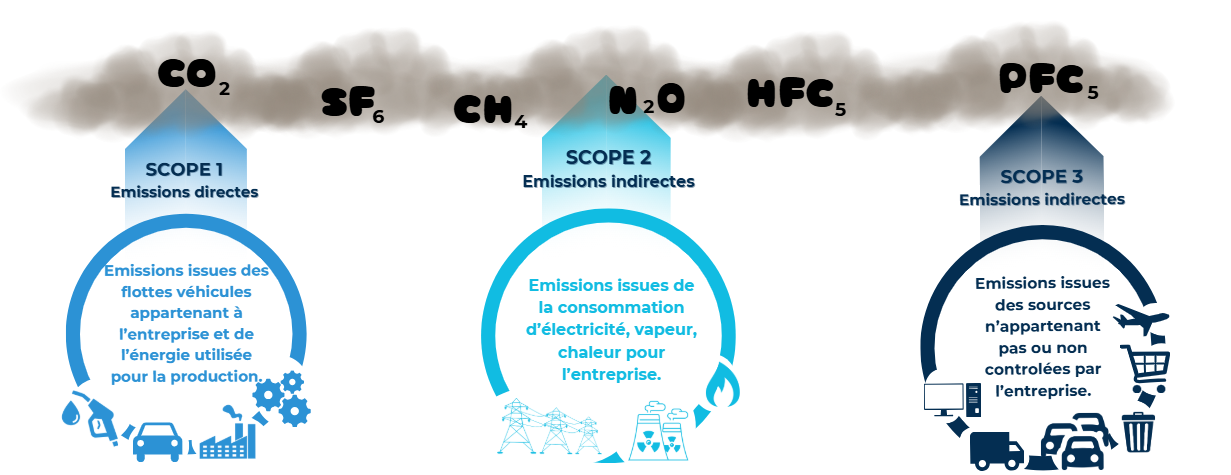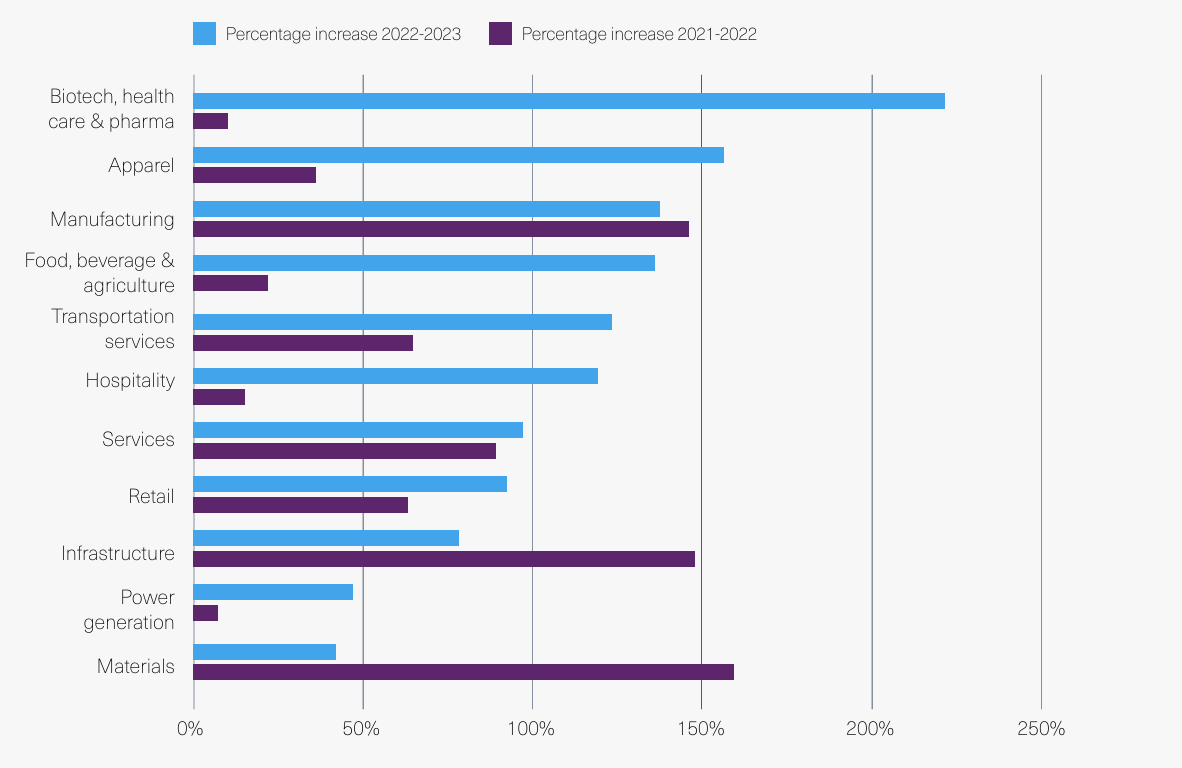SBTi (Science-based Targets Initiative): key points to remember

Climate change is one of the most urgent and complex challenges facing humanity today. The most recent scientific studies indicate that to limit global warming to 1.5°C, it is imperative to drastically reduce greenhouse gas (GHG) emissions worldwide. In this context, companies play a crucial role. Not only do they contribute to global emissions, but they also possess the means, innovation and influence to transform their business models.
The Science Based Targets Initiative (SBTi) provides a robust, recognized and transparent framework for companies to set emissions reduction targets aligned with scientific data. This approach ensures that decarbonization trajectories are compatible with the objectives of the Paris Agreement and, beyond that, strengthens the economic and environmental resilience of organizations.
Contents
Understanding SBTi: a scientific framework for climate action
🤔 What is the Science Based Targets initiative?
The Science Based Targets initiative is a collaboration between the Carbon Disclosure Project (CDP), the United Nations Global Compact, the World Resources Institute (WRI) and the World Wildlife Fund (WWF). Its main objective is to provide companies with a framework for setting emissions reduction targets based on climate science. Unlike traditional voluntary commitments, SBT targets are verified by experts and must meet strict criteria of consistency with climate models.
SBTi distinguishes between two levels of ambition:
- The "Well below 2°C" level, compatible with limiting global warming to well below 2°C.
- The "1.5°C" level, which today represents the recommended standard for ambitious and responsible companies.
🔦 Emission items: a global approach
To ensure complete coverage, SBTi requires the integration of emissions according to the GHG Protocol classification:
- Scope 1: direct emissions from the company's own facilities and operations (e.g. fuel combustion).
- Scope 2: indirect emissions associated with the production of purchased energy (e.g. electricity, heat, steam).
- Scope 3: all other indirect emissions up and down the value chain (transport, purchase of raw materials, product use, etc.).

Scope 1 and 2 cover 10 à 20% of total GHG emissions. Scope 3 emissions are often the most complex to manage, but also have the greatest impact: they can account for up to 90% of a company's total emissions.
🌍 Global momentum driven by Europe
According to the latest report from the Science Based Targets initiative, corporate commitment to science-based climate targets has grown remarkably.
The number of organizations with validated targets rose by 102% between 2022 and 2023. By the end of 2023, 4,205 companies worldwide had emission reduction trajectories in line with scientific recommendations for limiting global warming.
Europe stands out as the main driving force behind this dynamic: 53% of companies and institutions with SBTi validation are based on the continent. This European leadership reflects a growing awareness and determination to align corporate strategies with global limits.
Distribution of companies and financial institutions having validated their trajectories by region (2023)

This rise is taking place against a backdrop of global climate urgency, with companies playing a key role in the low-carbon economy.
Implementing the SBTi initiative: from commitment to action
How to sustain and strengthen your business through a successful low-carbon trajectory.
👌Set ambitious, measurable goals
The implementation of an SBTi trajectory is not simply declarative: it is based on a rigorous methodology for assessing emissions and projecting them over the medium and long term.
The objectives must be :
- Based on a clearly defined reference year.
- In line with IPCC climate scenarios.
- Auditable by third parties.
In France, this dynamic is particularly strong: 88% of CAC 40 companies are committed to this approach. This reflects a growing awareness of the need for strategic alignment with the planet's limits.
✅ Examples of sector commitments
The climate commitments validated by SBTi reveal highly contrasting dynamics across the various industries. In 2023, services and manufacturing industries accounted for the largest number of companies aligned with scientific climate trajectories, with 741 and 568 companies respectively. These two categories alone account for 58% of the organizations that have set validated targets, illustrating their driving role in the low-carbon approach.
Some sectors also posted spectacular growth. Thehealthcare, biotech and pharmaceutical industries, for example, recorded the strongest proportional growth. The number of companies involved rose from 23 to 74 in one year, an increase of +222%.
Conversely, traditionally highly exposed sectors such as materials are showing signs of slowing down. After a significant increase of +160% between 2021 and 2022, this sector has slipped back to 11th place in terms of growth, with only a +41% increase between 2022 and 2023 (from 109 to 154 companies).
Breakdown by business sector of companies having set targets

Beyond the global figures, several economic sectors are translating their commitment to the climate into concrete actions, validated by the SBTi initiative. These companies demonstrate that, whatever their field of activity, it is possible to define a credible, measurable and ambitious carbon trajectory.
Inspiring sector commitments:
💻 Econocom - Digital services
Econocom is committed to an ambitious low-carbon strategy, validated by SBTi:
- 61.4%reduction in absolute Scopes 1 & 2 emissions by 2028, compared with 2018.
- Renewable electricity: share up from 5% to 92% over the same period.
- Committed value chain: 100% of product and service suppliers to have adopted SBTi objectives by 2028.
source : Econom.com
🏗️ Bouygues Construction - Building & civil engineering
A forerunner in the construction and public works sector, Bouygues Construction's climate strategy is part of a global transformation process.
Objectives validated by SBTi :
- Scopes 1 & 2: - 40% of direct emissions by 2030 (base 2021).
- Scope 3 - Construction: 30% of indirect emissions over the entire building life cycle.
- Scope 3 - Public works: 20% of upstream emissions.
source : Bouygues-contruction.com
💊 Pharmaceutical industry - Collective commitment via Leem
As part of its environmental roadmap, Leem (Les Entreprises du Médicament) has committed the entire French pharmaceutical industry to the SBTi initiative. Two key areas of focus:
- Reduction of scopes 1 & 2 emissions: 50% by 2030 (base 2021), including production and consumption.
- Scope 3 emissions reduction: 25% on indirect emissions.
- A strategy integrated into the 3R roadmap (Reduce, Reuse, Recycle), aligned with the objectives of ending single-use plastics by 2040.
source : leem.com
These examples demonstrate that the SBTi initiative is adaptable to all sectors, and that each area can identify its own levers for action. Aligning corporate strategies with low-carbon objectives is no longer an option, but a key factor in sustainability, resilience and competitiveness.
💚Strategic and systemic benefits
Adopting a low-carbon strategy in line with Science Based Targets is not just an ethical or environmental imperative. It is also a strategic approach that creates value for both the company and its ecosystem. The benefits can be seen on several levels: reputation, compliance, economic performance and innovation.
✅Strengthen its reputation with customers, investors and talent.
⚖️Anticiper and manage regulatory risks in a context of tightening climate legislation (CSRD, green taxonomy, etc.).
💡Optimize costs through greater energy efficiency.
🔄 Accelerate innovation by rethinking business models towards greater circularity and sobriety.
GCI: your partner for a successful low-carbon strategy
At Global Climate Initiatives, we are convinced that no action plan can be implemented without an in-depth understanding of stakeholders. GCI offers tailor-made training and coaching to help organizations integrate sustainability at the heart of their strategy.
To achieve this, we support you at every stage of your environmental transition, through :
👩🎓Une training in climate issues
A course structured into 4 modules:
- Climate and energy fundamentals
- Methodological approach to GHG assessments
- Preparing your balance sheet with GCI
- Drawing up a balance sheet and reducing emissions
🤝"Climate Fresco" workshops by GCI
Our carbon engineers, trained and experienced in running La Fresque du Climat, are available to organize these workshops directly within your company, facilitating your teams' commitment to a concrete climate strategy.
In addition to raising awareness, GCI supports you in reducing your carbon footprint over the long term, thanks to the various tools available on our platform.
🎦GCI Academy space
A place to learn and develop skills:
- Tutorial videos, technical documentation
- FAQ by theme
- Real-life simulations on the GCI platform
✨ Customized strategic support
- Complete GHG assessment, including scoping, data collection and reporting
- Our Decarbo'Solutions®, the winning triptych for an effective and sustainable environmental transition:
🛠️Decarbo'Supply®: Decarbonize your purchasing throughout your supply chain. Reduce the carbon footprint of your products through your suppliers.
🎯Decarbo'Target®: Project your GHG balance over time.
⚡Decarbo'Tender®: Integrate carbon performance into your tenders
GCI's carbon engineers, experts in the Bilan Carbone® method (level 2, ABC) and in methodologies such as ADEME's "Act Pas à Pas", will use their know-how to guide your organization step by step towards a sustainable environmental transition.
Committing to the SBTi trajectory means more than simply meeting a climate requirement: it means choosing a more sober, resilient and forward-looking business model. Against a backdrop of increasing regulation, high societal expectations and new economic pressures, companies that align their strategy with science are ahead of the game. They transform constraints into levers for competitiveness, innovation and attractiveness.
Decarbonization is now a strategic imperative.
And every organization has a role to play.
With the right tools and committed partners like GCI, you can set your company on an ambitious, credible and sustainable course.
The time to act is now.
Sources
- Publication of the SBTI guide: reinforcing companies' climate ambitions
- SBTiMonitoringReport2023.pdf
- Climate strategy: Bouygues Construction's CSR Commitments
- The Science Based Targets initiative (SBTi) approves Econocom's decarbonization goals | Econocom
- Ecological transition: the pharmaceutical sector commits to a path of decarbonization and the phasing out of single-use plastic packaging | Leem








